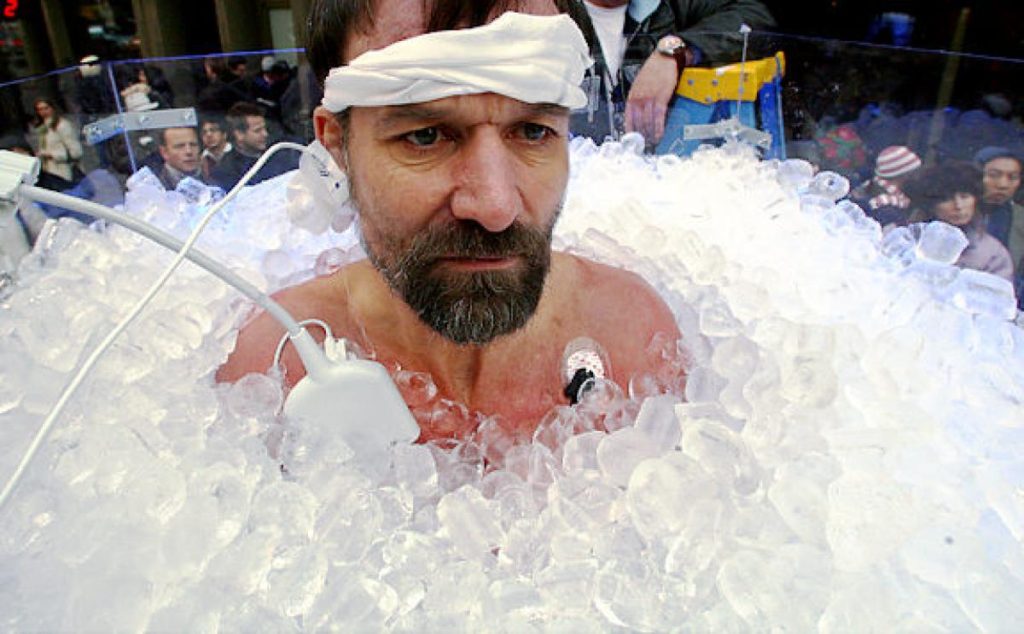In 1978, Gabe Merkin’s best-selling sports medicine book introduced the term “RICE” to health professionals and athletes the world over. To this day Rest Ice Compression Elevation is – rather unfortunately – still recommended and promoted by physical therapists, coaches and just about anyone else involved on the sidelines of sport. It is still recommended despite Dr Mirkin’s (among other scientists) more recent publications that ice may, in fact, delay tissue healing and recovery. You can read his own admission here.
Let’s briefly discuss those points:
Inflammation is necessary for healing
This is such a simple point. The body is smart, right? If it wasn’t, humans wouldn’t have made it as far as we have. Acute inflammation is a great example of how awesome the human body is at looking after itself. If you get a cut on your knee and it gets infected, an inflammatory response is triggered by the immune system. A big part of that inflammatory response is to spike the blood stream with purpose-built cells that will hunt down and destroy the invading pathogen. What many people don’t realise is that when you are sore the day after a long run or hard gym session, an almost identical situation is happening in your body. The tissues that were damaged and torn during the exercise trigger an immune system inflammatory response that sends in healing cells which clean up the damage and prepare the tissues for optimal healing – just like they do at the site of an infected cut or rash. This inflammatory process necessary and desirable for repair and recovery from training and injury.
To reduce inflammation is to reduce healing
Inflammation is a GOOD thing. It is an example of your body knowing exactly what to do and how to do it. The fact that somewhere along the way we humans decided that reducing acute inflammation is helpful, is actually rather counterintuitive. To place ice on an injury to decrease the inflammation is literally decreasing the healing capacity of the body and slowing down a process that works perfectly well (unless you’ve got some sort of rare underlying condition). The cells your body produces for cleaning up damaged tissues and preparing the site for healing will not make it to the site as and when they should if extreme cold is added to the equation. The ice causes blood vessels to constrict, thus decreasing the flow of blood (and therefore helpful healing cells) to the iced area. Inflammation is the opposite response – it is the blood vessels opening up more so than usual so that more blood and cells can access the site of injury. Again, healing requires this increased blood flow and is a desirable process. Research has shown us that icing an injury causes a delayed healing response which can result in suboptimal healing overall and in some cases might even lead to more scar tissue than if the ice were not used.
Ice provides short-term pain relief
Perhaps the most evidenced benefit of icing an injury is the 20-30 minute pain relief it can provide. At first this sounds great, but once again it can be quite a counterintuitive idea when you think deeper about what acute pain actually means. Pain has a function. Pain is your body’s way of saying “hey there’s some damage here – I need some time to clean this up and repair, so please stop using me for meantime!”. Pain is your body’s STOP sign. Sure, relieving this pain is nice, but you’ve got to be weary of the fact that you might do more damage to the area if you continue to use it because it “doesn’t feel so bad” as a result of the pain relief. Hopefully you’ve learned from the previous points that the possibly irreversible damage that can be done by icing an injury is not worth the half-hour of pain relief. If your pain is excruciating and/or you cannot move the injury, you should seek immediate medical help to rule out or properly manage any nasties like fractures or other severe internal damage.
So, we’ve told you all about why you shouldn’t ice an injury. What should you do then?
- First of all, stop exercising immediately. Remember that the pain is a signal to stop using something because it can’t function as it should be able to.
- Immobilise the injured area to prevent any further damage. Over the next few hours and days (depending on the injury), slowly introduce light movement to the area either by using your hands to gently move it or the muscles around the injury. Don’t push for any more range of motion than is comfortable.
- If you simply can’t deal with the pain, and a health professional has already ruled out severe damage, you can opt for minimal periods of compression and/or icing. If you do opt for icing, only apply the cold for 10 minutes and then leave it off for 20 minutes. Repeat a few times if necessary. By breaking up the cold periods, the blood vessels are able to open up and allow cellular and nutrient flow into the injured area.
- On that note, nutrients are your best friend and worst enemy through injury. If you fuel your body with hearty, healthy real foods packed with micronutrients in the days following an injury, you’ll promote powerful healing. If you eat and drink rubbish like processed foods and alcohol, you’ll perpetuate pain and prolonged recovery.
- Functional rehabilitation and joint mobilisation and manipulation are all well supported by scientific evidence, so it’s in your best interests to seek appropriate advice is the injury is of significant severity.




